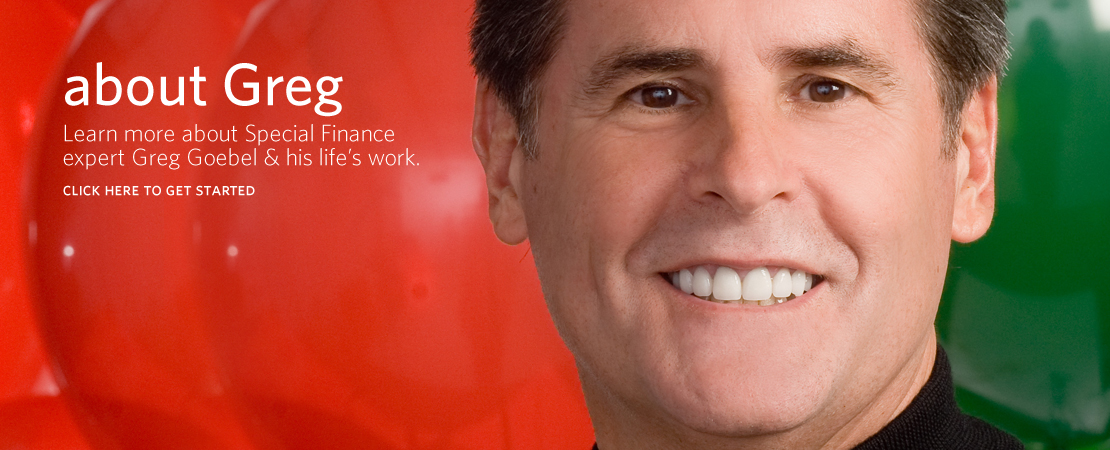Dont Let the Bad Lead Syndrome Stymie SF Growth
When I bought my first e-lead, there were only a handful of providers. We had been working infomercial leads for over four years at my Hyundai and used car stores when I was first approached by one of the trailblazers of the industry—InterActive Financial Marketing Group. We were very adept at turning volumes of what would be termed marginal-quality leads into appointments that would show and ultimately buy, so it didn’t take much to convince me to give these new leads a whirl. I really didn’t expect much; after all, did subprime credit customers really have Internet access?
It took less than a month to discover these leads were of much better quality than our infomercial leads; we closed 18.3 percent of them in the first 30 days. I suddenly found myself doing whatever I could to find the few other e-lead providers, such as Customer Funding and Cyberleads, to lock down exclusive arrangements for large market areas. The final month before I sold the stores, we delivered an amazing 31 percent of the leads we bought.
At the same time, in the pre-Google days, we ramped up efforts to drive traffic to our SF Web site, as it didn’t take long to learn that it was much easier to set appointments that were kept from leads that came from our own site. We were reaping big bonanzas at an unbelievably low cost per sale. Of course, we already had four years invested in learning how to quickly and efficiently process and work infomercial leads.
Today, the e-lead landscape has changed dramatically. Not all leads are created equal. An amazing number of new lead providers pop up every month. The quality has changed markedly, as some of the leads today are created from everything from spam e-mail to offers to win big-screen HDTVs and iPhones. Many of these leads are now bought and sold wholesale (some over and over).
While this isn’t meant to indict all the new lead providers that have burst onto the scene, certainly some seem to be doing their utmost to pollute the e-lead environment. The situation is no different than in any other industry; a few bad apples spoil the whole bunch. There are indeed a few companies that churn these leads on the market and get blacklisted by the quality companies, only to change their names and begin selling them again. It’s basically the same modus operandi used by a few disreputable direct mail companies that have scammed dealers for years.
As a result, today there are more leads on the market than ever, and many are certainly of lesser quality than what existed eight years ago. So what is one to do, throw up their hands and walk away? I think not.
When we first pushed the infomercial button 12 years ago, that too was lightning in a bottle. We created more leads than anyone could handle and blew out every system we had in place. We quickly gathered the attention of other dealers who also followed with their own campaigns. Initial quality was actually pretty good, but that soon changed. Over the course of the next four years, infomercials were looked at by my team in about the same light as many dealers view e-leads today. You know what? We still sold cars. Was the cost per sale as good as it was initially? No, but to this day, dealers sell thousands of cars every month from infomercial leads thanks to good systems and processes.
Just like the dealers selling vehicles from infomercial leads, if you have a good system to work these e-leads and work them with discipline and perseverance, you will sell cars. Now that is a pretty big “if”, but it is a fact. I don’t know whether it is tougher to create the “machine” or to have the discipline to work it, but that is what it takes.
I know a very successful SF dealer who is looking outside of the auto industry to purchase e-leads of all types—real estate leads, mortgage leads, renter leads, etc. Heck, I bet he would buy library card e-leads if he could find them. What he cares about is cost per sale, not cost per lead. They track them like crazy, work them through a call center and turn them into lots of sales. It is simply a numbers game.
It is much easier for a dealer or manager to complain about the deterioration of lead quality than to admit the ultimate root of the problem is the process by which they work the leads.
If you or your department manager is faced with the problem of limited ROI on the e-leads you’re buying – for that matter, any leads you’re buying, regardless of the source – it is time to examine your processes as well as your providers. Regardless of how your department is set up to handle leads, it is vital that any person communicating with a customer has been thoroughly trained with the proper telephone techniques for special finance.
To accomplish this, you must first identify the goals of the phone call. The primary goal is to establish good rapport and set an appointment (which will be kept). Without achieving this, a sale will most likely never occur. Please note, I did not say work to get the customer approved before you invite them into the store! Secondary to the appointment-setting goal, in some instances, is gathering or clarifying information used to qualify the customer’s creditworthiness and ensuring the customer brings all necessary documents in order to take immediate delivery. The most important thing to remember, however, is that you are selling the ability to obtain financing and an appointment to visit the dealership.
The best preparation for all of these goals, regardless of the size or configuration of your team, is to use call guides in conjunction with training that emphasizes role-playing. Some people may roll their eyes when the words “guide” or “script” are used, but nothing ensures sustained success any more than a well-rehearsed call that is delivered 100-percent naturally.
Over the years, my stores used the same guide and modified it to reflect what created the lead (i.e. an infomercial, the Internet, or a fresh call directly to the dealership from a newspaper or TV ad). Remember, with many situations, the dealership most likely already has credit information that the customer has supplied over the phone or Internet. As you craft your guide, keep in mind your goals and also remember to anticipate the four questions that you will most likely encounter. You must be prepared to deflect those questions that can so easily cause a call to fail, resulting in no appointment or an appointment that doesn’t show. The four most common customer concerns are:
• How much of a down payment will I need?
• What will my payments be?
• What is the interest rate?
• Do you have any [fill in the blank] in stock, and how much are they?
Why is it so important to have answers prepared to deflect these questions? Any one of them can allow the customer to take the lead in the conversation, ultimately sidetracking you from your goal. In addition, at the time of the call, most of them can’t be answered. Even if you could, there is often no “good” answer. For example, if you quote a rate or a payment (heaven forbid), you have either painted yourself into a corner or unnecessarily scared away the customer.
Some of you may think this is all too simplistic for your well-trained teams. The fact is that the best teams practice daily; that is how they remain champions. Alex Rodriguez still attends batting practice every day. If the appointment-set or -show rates start to drop, that generally means that people on the phones are beginning to ad-lib or modify items on the guide. It is “back to basics” time.
Once training is addressed, the most important thing to remember is that time is of the essence. Yes, some of the leads you receive may be days or even months old, but you’ll still sell some of them. Are they your best percentage? Of course not.
These leads go from green to ripe to rotten with amazing speed. What you can’t do is let the stale leads taint the urgency to work with the real-time leads. The problem is, you seldom know if a lead is minutes or months old before you make the call. You have to call them all, and call them quickly. True e-Leads involve customers who are looking for immediate gratification (they want to know whether or not they are approved right now).
Another type is the customer who may be sitting across the desk from a less-skilled F&I manager who has just submitted the customer’s credit info to a company like e-Loan as a last ditch effort to find financing. In either case, time is your enemy. The ideal response time from the moment the lead arrives is within 15 minutes. After an hour, the lead really becomes stale.
Along with a process, you must have a system in order to track your activities. Without proper tracking, you will have no way to discern which lead providers truly deliver an effective cost per sale. I would rather pay $40 per lead and close 10 percent of them than pay $5 per lead and only close one percent; but if you can get the $5 leads to close at 4 percent, I will take them all day. Without dedicated tracking, you really don’t know what is working and what isn’t.
Similarly, without tracking you won’t know which call center or salespeople need additional training or coaching. You may discover you have someone who can’t close a door, let alone a sale, but they do a terrific job at setting appointments that are kept. Tracking is the key to solving the puzzle.
How do you proceed? It takes opportunities to sell vehicles. The way I see it, you have three choices. You can build the machine, the systems and processes necessary to efficiently work leads of any type. Using that regimen, coupled with discipline and perseverance, you will succeed.
The second choice is outsourcing. If you can’t successfully build the machine, you can outsource it. There are a number of outsourced call centers that dealers are using to cost-effectively work e-leads (and any other leads), set appointments and follow-up no-shows. If you have made an earnest effort and don’t have the people or time, this is definitely an option.
Finally, you can just say, “To heck with the e-leads,” write them off and work on a way to capture all of the SF customers who are already walking in — and back out of — your front door. Or, you could do that and work the e-leads. Now that would be a novel idea! There are plenty of leads out there and vehicles to sell. The strong dealers just keep persevering. Put a plan in place, and stick to your plan. The ongoing rewards shall be great!
Until next month,
Good Selling!
Vol 5, Issue 5
To register to attend a Special Finance SuperCharged workshop or training with Greg Goebel, click here.




